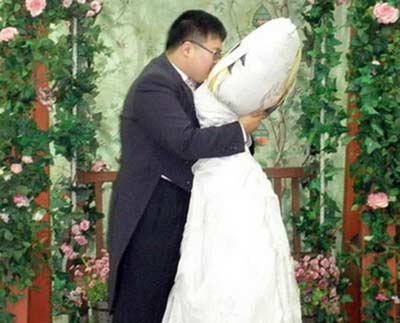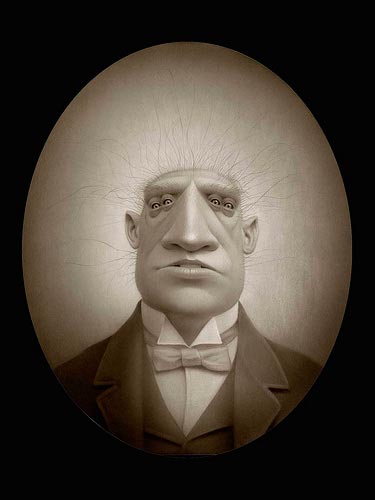weirdos
Not every superhero has powers, you know. You can be super without them.

Paradoxically we initially like narcissists more because of their exploitative, entitled behaviour—but it doesn’t last long. (…)
There are all sorts of paradoxes in the way narcissists behave. Here are three that this research helps explain:
1. Why do people continue to behave selfishly when it only ruins their relationships with others?
2. Why do narcissists devalue others when they are so dependent on them for admiration?
3. Why don’t narcissists spot the cycle of early attraction followed by rejection?
The first two are partly explained by the fact that narcissistic behaviour is, at first, attractive to other people. Behaving selfishly seems to bring them a rush of admiration which they get addicted to, while devaluing others when the inevitable rejection comes, covering it up by searching out new people to worship them.
The reason narcissists fail to spot this cycle may well be that friends and partners never hang around long enough to tell them in such a way that they actually believe it and want to do something about it.
graphic design { Casper Sormani }
Focus. Speed. I am speed.

{ Obsessive driving fanatics are prone to drive aggressively | Full story }
screenshot { from Embryo, 1976 | more | IMDb }
If they say, Why, why, tell ‘em that is human nature

Doctors warned of a potentially dangerous method of cocaine abuse–injecting the drug directly into the urinary tract–a practice that led to complications costing one man his penis, nine of his fingers and parts of his legs. (…)
Perry said the man was admitted to a New York hospital for a problem with his penis, which had remained erect for three days resulting in a painful inability to urinate. (…)
On his third day in the hospital, the man’s erection suddenly went down, but blood leaked into the tissues and coagulated under the skin of his feet, hands, genitals, back and chest over the next 12 hours.
{ UPI/Cocaine.org | Continue reading | Thanks Reto! }
‘Every moment is the last because it is unique.’ –Marguerite Yourcenar

Erotomania is a type of delusion in which the affected person believes that another person, usually a stranger, is in love with him or her.
The illness often occurs during psychosis, especially in patients with schizophrenia or bipolar mania.
Erotomania is also called de Clérambault’s syndrome, after the French psychiatrist Gaëtan Gatian de Clérambault (1872–1934).
The term erotomania is often confused with obsessive love, obsession with unrequited love, or hypersexuality (hypersexuality replaces the older concepts of nymphomania (furor uterinus) and satyriasis.).
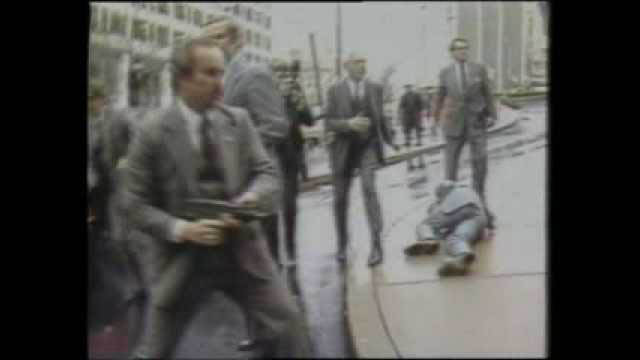
The Reagan assassination attempt occurred in Washington, D.C. on Monday, March 30, 1981.


President Reagan and three others were shot and wounded by John Hinckley, Jr. with a .22-caliber pistol.



Reagan was the first serving United States president to survive being shot in an assassination attempt.

{ Reagan assassination attempt | Wikipedia | Continue reading | Google Images | Related: In a 1982 speech, President Ronald Reagan declared illicit drugs a threat to America’s national security, putting a too-literal gloss on the phrase “war on drugs.” }
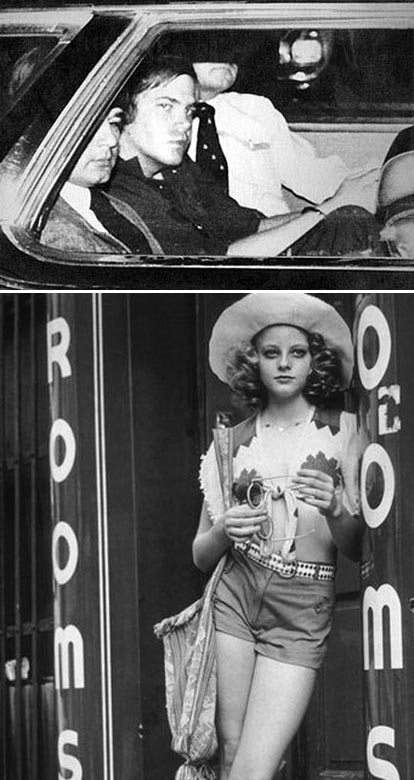
The motivation behind Hinckley’s attack stemmed from an obsession with actress Jodie Foster due to erotomania. While living in Hollywood in the late 1970s, he saw the film Taxi Driver at least 15 times, apparently identifying strongly with Travis Bickle, the lead character.
Hinckley arrived in Washington, D.C. on Sunday, March 29, getting off a Greyhound Lines bus and checking into the Park Central Hotel. He had breakfast at McDonald’s the next morning, noticed U.S. President Ronald Reagan’s schedule on page A4 of the Washington Star, and decided it was time to make his move.
Knowing that he might not live to tell about shooting Reagan, Hinckley wrote (but did not mail) a letter to Foster about two hours prior to the assassination attempt, saying that he hoped to impress her with the magnitude of his action.
{ Wikipedia | Continue reading | The Trial of John Hinckley, 1982 | Hinckley bought two identical .22-caliber revolvers in Rocky’s Pawn Shop in Dallas on Oct. 3, 1980 | Photos: John Hinckley, Jr. | Jodie Foster in Taxi Driver. }
Let me tell you how I live… Like that?
YouMe: Control Real People In Real Time
An unusual new service called YouMe is being touted as the next generation of gaming, and a new way of sourcing help. The service will let users (”Yous”) control real people (”Mes”) in real time. Yous give instructions to the Mes via bluetooth headset or text message, and the Mes escapades are captured by video camera and streamed live. Almost anything is game as far as requests, barring illegal or sexual activity. YouMe is in private beta, and should launch later this year.
Deciders for the lonely
Wolfie Blackheart is not an ordinary 18-year-old. She believes she is a wolf –technically, a werewolf– and so she wears a tail. She also wears a harness in case someone special wants to drag her around.
And last week, she used a pocketknife in her kitchen to decapitate a dog–already dead, according to Wolfie–that had been missing since Jan. 5.
Noon burn gold into our hair
{ The notion that the speed of thought could be measured, just like the density of a rock, was shocking. Yet that is exactly what scientists did. | Discover | Full story }
There’s this store where the creatures meet, I wonder what they do in there

Jeanette’s Taxidermy proudly introduces Pet Pillows as an alternative way to remember your pet. Each pet pillow is hand made from the fur of your pet and made into a pillow that you can display. On one side of the pillow is your pet’s fur and the other side of the pillow is your choice of fabric. These soft, huggable pillows are a great way to enjoy your cherished pet and is an inexpensive alternitave to taxidermy.
Prices: $65 for a cat, $75-$125 for a dog, $150 for a horse.
Freeze your pet immediately upon passing to insure there will be no hair slippage.
Double bag to insure no freezerburn.
Ship packages ONLY on Mondays to prevent carrier mishaps. All frozen animals must be shipped next day air to insure against spoilage.
{ Thanks Shampoo! | The site Jeanettestaxidermy.com doesn’t exist anymore | Jeanette’s Taxidermy profile on Muley Madness | Read more: Woman who turns pets into pillows faces death threats and Taxidermist Jeanette Hall standing with her pedestal mounted horse | The story behind this photo }
And the chalk squeaked, the floorboards creaked

Percentage of Americans who believe in angels: 55
Percentage of Americans who believe in evolution: 39
Percentage of Americans who believe in anthropogenic global warming: 36
Percentage of Americans who believe in ghosts: 34
Percentage of Americans who believe in UFOs: 34
artwork { James Jean }
Young bones groan, and the rocks below say:
A Hindu spirit is stalking the streets of Stockholm, armed with this Nordic capital’s latest fad: the nail bed.
It is not the wood and iron nail variety used by Hindu fakirs, but instead a modern Swedish variation that usually consists of a light foam rubber pad, covered in cotton sacking and embedded with small, hard plastic disks with sharp little spikes. Modernized or not, it hurts. And the fewer the spikes, the more they hurt.
“It’s quite painful initially,” said Catarina Rolfsdotter-Jansson, 46, a yoga instructor and writer who uses her nail bed almost every day. “The trick is, all the adrenaline rushes, after which you relax and feel nice again.”
He had an accident with a three-bar fire, but that’s OK
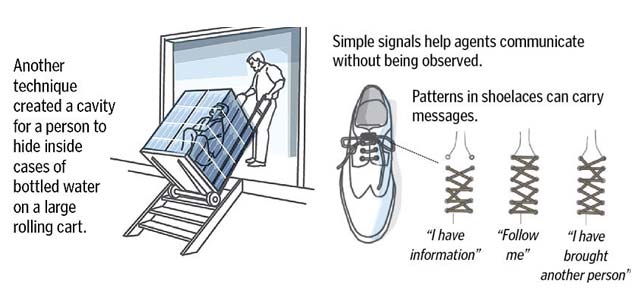
{ Among the CIA’s many tricks during the Cold War, it turns out, was some actual magic. A now-declassified manual by magician John Mulholland taught American spies the arts of deceit. | Boston Globe | more }
He had a room full of switches and dials and lights and a head full of clouds

Compulsive hoarding is a form of obsessive-compulsive disorder (OCD), a neurobiological condition, most likely genetically based. OCD comes in a wide variety of forms, of which hoarding is only one. Compulsive hoarders may collect only certain types of things, or they may indiscriminately save everything. We are not talking here about collecting things that are valuable or important such as art, coins, or stamps. (…)
Some of the things most commonly saved include newspapers, magazines, lists, pens, pencils, empty boxes, pamphlets, old greeting cards, junk mail, old appliances, outdated books and even assorted labels, string, rubber bands, plastic containers, bottles, and bottle caps. In the most extreme cases, people have been known to save such things as empty matchbooks, used tissues, old cigarette butts, bird feathers, old cars, discarded paper cups, used aluminum foil, paper towels, lint, and hairs. Some of these sufferers will even rummage through other people’s trash, and bring home obvious junk that to them, seems quite useful or repairable. (…)
In 1932, Homer Lusk Collyer (1881–1947) purchased a building across the street at 2077 Fifth Avenue for $8,000. He planned to divide it into apartments and to rent them. This plan was never realized, as he suffered a stroke in 1933, becoming blind as the result of hemorrhages in both of his eyes. With one exception, he was reportedly never seen outside of his home again.
Homer’s brother, Langley Collyer (1885–1947), gave up his job to nurse his brother back to health. No physician was ever consulted. Langley apparently believed that the cure for his brother’s blindness was for him to eat 100 oranges a week, and to keep his eyes closed at all times, in order to rest them. The brothers possessed a large library of medical books, and it would seem that Langley felt he had the information and knowledge necessary to treat his brother.
{ OC Foundation | Continue reading }
Burglars tried to break into the house because of unfounded rumors of valuables, and neighborhood youths had developed a fondness for throwing rocks at the windows. They boarded up the windows. In an attempt to exclude burglars, Langley used his engineering skills to construct booby traps and tunnels among the collection of items and trash that filled the house. The house soon became a maze of boxes, complicated tunnel systems consisting of junk and trash rigged with trip wires. Homer and Langley Collyer lived in “nests” created amongst the debris that was piled to the ceiling.
Their gas, telephone, electricity and water having been turned off because of their failure to pay the bills, the brothers took to warming the large house using only a small kerosene heater. For a while, Langley attempted to generate his own energy by means of a car engine. Langley began to wander outside at night; he fetched their water from a post in a park four blocks to the south (presumably Mount Morris Park, renamed Marcus Garvey Park in 1973). He also dragged home countless pieces of abandoned junk that aroused his interest. In 1933, Homer, already crippled by rheumatism, went blind. Langley devised a remedy, a diet of one hundred oranges a week, along with black bread and peanut butter. He also began to hoard newspapers, so that his brother could catch up with the news once his sight returned. (…)
On March 21, 1947, an anonymous tipster phoned the 122nd police precinct and insisted there was a dead body in the house. A patrol officer was dispatched, but had a very difficult time getting into the house at first. There was no doorbell or telephone and the doors were locked; and while the basement windows were broken, they were protected by iron grillwork. Eventually an emergency squad of seven men had no choice but to begin pulling out all the junk that was blocking their way and throw it out onto the street below. The brownstone’s foyer was packed solid by a wall of old newspapers, folding beds and chairs, half a sewing machine, boxes, parts of a wine press and numerous other pieces of junk.
A patrolman, William Baker, finally broke in through a window into a second-story bedroom. Behind this window lay, among other things, more packages and newspaper bundles, empty cardboard boxes lashed together with rope, the frame of a baby carriage, a rake, and old umbrellas tied together. After a two-hour crawl he found Homer Collyer dead, wearing just a tattered blue and white bathrobe. (…) But Langley was nowhere to be found. For weeks there was no sign of Langley.
On Saturday, March 30, false rumors circulated that Langley had been seen aboard a bus heading for Atlantic City, but a manhunt along the New Jersey shore turned up nothing. Two days later, the police continued searching the house, removing 3,000 more books, several outdated phone books, a horse’s jawbone, a Steinway piano, an early X-ray machine, and even more bundles of newspapers. More than nineteen tons of junk had been removed, just from the ground floor of the three-story brownstone. Still unable to find Langley, the police continued to clear away the brothers’ stockpile for another week, removing another 84 tons of rubbish from the house.
On April 8, 1947, workman Artie Matthews found the dead body of Langley Collyer just ten feet from where Homer had died. His partially decomposed body was being eaten by rats. A suitcase and three huge bundles of newspapers covered his body. Langley had been crawling through their newspaper tunnel to bring food to his paralyzed brother when one of his own booby traps fell down and crushed him. Homer, blind and paralyzed, starved to death several days later.
{ Wikipedia | Continue reading }
The last name of the title characters of E. L. Doctorow’s new novel, “Homer & Langley,” is Collyer, and the book’s brothers do, in fact, turn out to be versions of those infamous New York pack rats, whose overstuffed Harlem brownstone made their name synonymous with obsessive-compulsive collecting.

